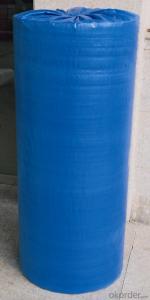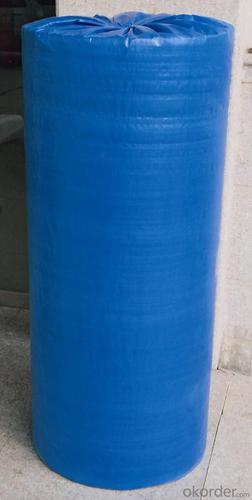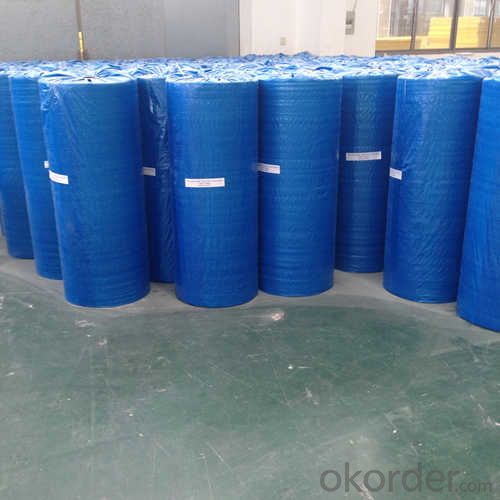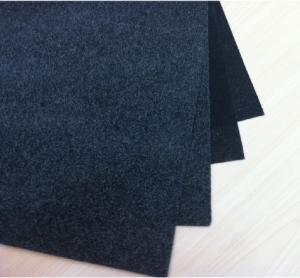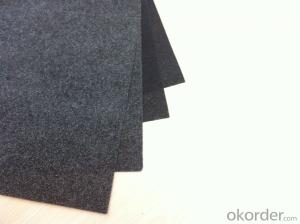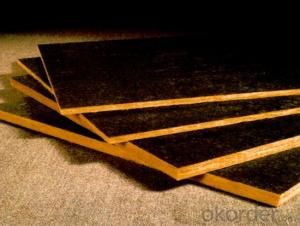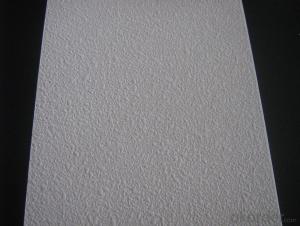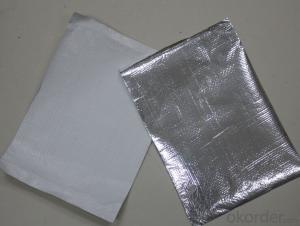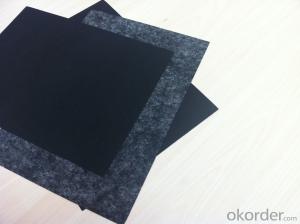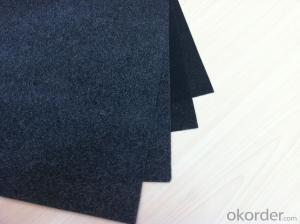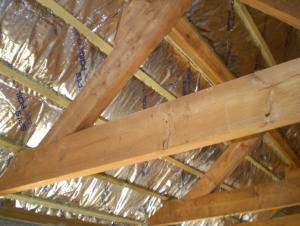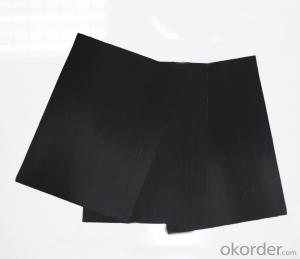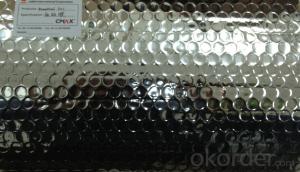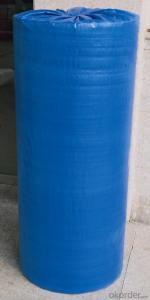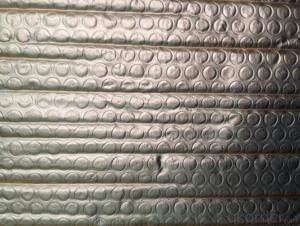Fiberglass Facing Black Fiberglass Tissue for Thermal Insulation and Acoustic-85E
- Loading Port:
- Shanghai
- Payment Terms:
- TT OR LC
- Min Order Qty:
- 500 m²
- Supply Capability:
- 100000 m²/month
OKorder Service Pledge
OKorder Financial Service
You Might Also Like
Specification
Introduction of Fiberglass Tissue
Fiberglass Tissue is a kind of facing, which is made of by the white fiberglass tissue, and special production process.
Application of Fiberglass Tissue
Our black tissue are mainly used as facing for glass wool insulation, rockwool, mineral wool etc. Also fiberglass tissue facing is used under roof decking, under attic rafters, over existing attic thermal insulation, in floors, walls and crawl spaces, and in industrial and commercial buildings to block radiant heat coming into house through the roof during the summer and retain indoor heat generated during in winter
Advantage of Fiberglass Tissue
Light weight
• High manufacturing accuracy
• High strength
• Small inertia resistance
• Strong heat dissipation ability
• Good visual effect
• High reflective insulation
• Heat resistant, water proof, stable at high temperature;
• Environmentally friendly, no smell and not-toxic;
• Smooth and clear surface;
Packing of Fiberglass Tissue
1. Waterproof paper then PVC shrinking Film
2. Water-Proof film only
3. Woven cloth
4. Kraft paper or Water Proof Film then Metal/wooden pallet
5. (Also as your request. )
Specification of Fiberglass Tissue
Specification | ||
ITEM | UNIT | VALUE |
Type | E | |
Weight | g/m2 | ≥85±5 |
Thickness | mm | 0.40 |
Tensile Strength MD | n/125px | ≥120 |
Tensile Strength XD | n/125px | ≥100 |
Fiber Diameter | µ | 9 |
Fire Resistant Property | B1 | |
Pictures of Fiberglass Tissue
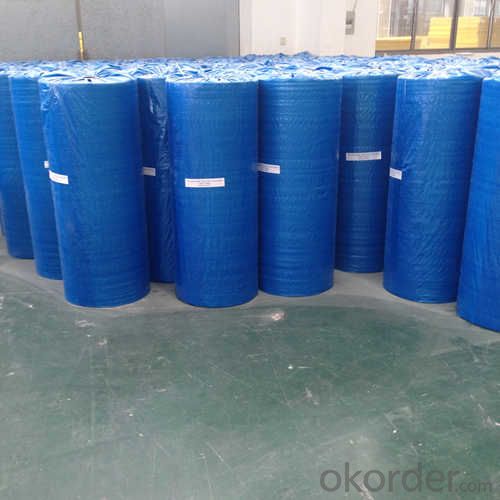
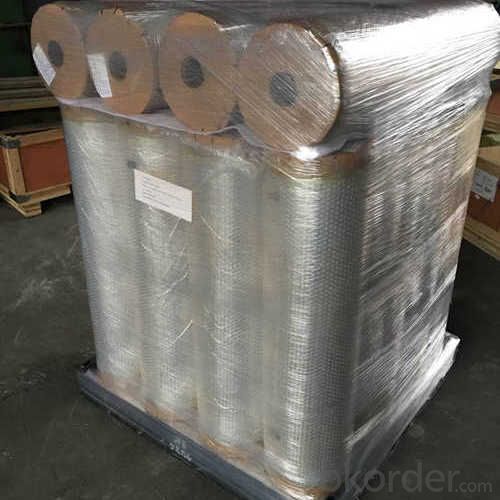
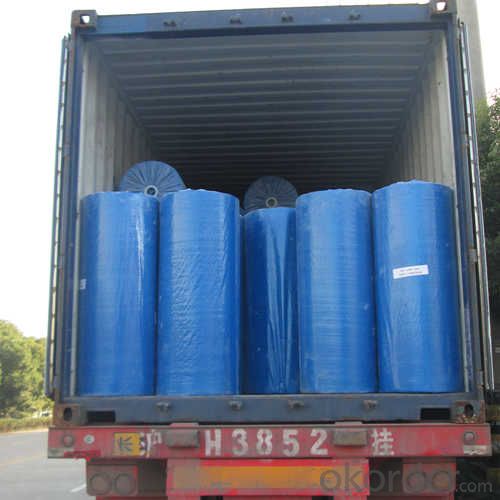
We have organized several common questions for our clients,may help you sincerely: 1. What is the storage condition? The Aluminum Foil Facing should be stored at room temperature and kept from wet and heat source. 2. How to guarantee the quality of the products? We have established the international advanced quality management system,every link from raw material to final product we have strict quality test;We resolutely put an end to unqualified products flowing into the market. At the same time, we will provide necessary follow-up service assurance. 3. How long can we receive the product after purchase? In the purchase of product within four working days, we will arrange the factory delivery as soon as possible. The specific time of receiving is related to the state and position of customers. Commonly 7 to 10 working days can be served.FAQ
- Q: How does fiberglass facing contribute to energy efficiency in buildings?
- Fiberglass facing plays a crucial role in enhancing energy efficiency in buildings. This material is typically used as insulation, providing a barrier to heat transfer and reducing the amount of energy needed to maintain a comfortable indoor temperature. One of the primary ways fiberglass facing contributes to energy efficiency is through its high thermal resistance or R-value. The R-value measures the resistance to heat flow, and fiberglass insulation with facing has a higher R-value than materials without facing. This means that it can effectively prevent the transfer of heat between the inside and outside of a building, reducing the need for excessive heating or cooling. Furthermore, fiberglass facing helps to create an airtight seal when installed properly. This prevents the infiltration of drafts or air leaks, which can significantly impact energy efficiency. By sealing off these gaps, fiberglass facing helps to maintain a consistent indoor temperature and reduces the workload on heating and cooling systems. Another important aspect is that fiberglass facing can act as a vapor barrier. It prevents the movement of moisture through the insulation, reducing the risk of condensation and subsequent damage to the building structure. By controlling moisture, fiberglass facing contributes to the overall durability and longevity of the insulation system. In addition to its insulation properties, fiberglass facing is also fire-resistant, which is crucial for building safety. It can help slow down the spread of flames in case of a fire, providing valuable time for occupants to evacuate and for emergency services to respond. Overall, fiberglass facing is a cost-effective and efficient solution for improving energy efficiency in buildings. Its high R-value, ability to create an airtight seal, moisture control capabilities, and fire resistance all contribute to reducing energy consumption, lowering utility costs, and creating a more comfortable and sustainable indoor environment.
- Q: This question asks for an explanation of the various methods used in the manufacturing process to produce black fiberglass tissue.
- <p>Black fiberglass tissue is typically produced through a series of manufacturing processes that involve the use of glass fibers and resins. The primary methods include: 1) The wet lay-up process, where glass fibers are soaked in a resin solution and then layered to form the tissue. 2) The spray-up process, where resin and chopped glass fibers are sprayed onto a mold and allowed to cure. 3) The hand lay-up process, which is similar to wet lay-up but involves manually applying the resin and fibers. 4) The pultrusion process, where fibers are pulled through a resin bath and then into a heated die to form the desired shape. 5) The filament winding process, where continuous glass fibers are wound around a rotating mandrel to create a strong, uniform tissue. Each method has its own advantages and is chosen based on the specific requirements of the end product, such as strength, flexibility, and cost.</p>
- Q: Fiberglass Felt Polyester Powder Adhesive Details
- The continuous raw silk mats are formed by the process of drawing the glass precursor or the continuous filament which is released from the original cylinder in the form of a 8-inch fabric on a continuous moving web and bonded with a powder binder. Continuous fiberglass filament fiber in the fiber is continuous, so the composite material to enhance the effect of shorter cut felt good. Mainly used in the pultrusion method
- Q: Can black fiberglass tissue withstand high-temperature conditions?
- <p>Black fiberglass tissue, also known as black glass fiber cloth, is designed to withstand high temperatures. It is made from glass fibers that have been coated with a black resin, which enhances its heat resistance. This material can be used in environments with temperatures up to 500掳C (932掳F) or even higher, depending on the specific type and treatment of the fiberglass. It is commonly used in applications such as insulation, thermal protection, and reinforcement in high-temperature industrial settings. However, it's important to note that prolonged exposure to very high temperatures can degrade the material over time, so it's crucial to consider the specific temperature range and duration for your application.</p>
- Q: The user is asking if black fiberglass tape can be used to create a window screen or blind.
- <p>Yes, you can use black fiberglass tape to make a window screen or blind. Fiberglass tape is strong, durable, and resistant to weather and UV rays, making it suitable for outdoor use. To create a window screen, you can use the tape to secure a mesh material to a frame. For a blind, you might weave the tape in a pattern to create slats. However, ensure the tape is of high quality and the mesh is appropriately sized for the window. Always follow safety precautions when working with tools and materials.</p>
- Q: Is it possible to utilize black fiberglass tissue in industrial applications?
- <p>Yes, black fiberglass tissue can be used for industrial purposes. It is known for its strength, durability, and resistance to various environmental conditions. Commonly used in construction, automotive, aerospace, and electrical industries, black fiberglass is valued for its non-conductive properties and ability to withstand high temperatures. It is often employed in the manufacturing of composite materials, insulation, and structural components where its unique properties are beneficial.</p>
- Q: Is not the multi-layer membrane waterproof, the bottom of the membrane should use glass fiber mats?
- In the yin and yang angle additional layer construction better fit, polyester tire waterproofing membrane tires hard
- Q: This question asks for the distinctions between black and white fiberglass, likely in terms of their properties or applications.
- <p>Black fiberglass and white fiberglass primarily differ in their color, which is due to the pigments added during the manufacturing process. Black fiberglass often contains carbon black, which can provide better UV resistance and may be more resistant to yellowing over time. White fiberglass, on the other hand, is typically used for applications where visibility or aesthetics are important, such as in boat hulls or certain types of insulation. Functionally, both types have similar strength and durability, but the choice between black and white often comes down to specific application needs or personal preference.</p>
- Q: Is it acceptable to use black fiberglass tissue as a packaging material?
- <p>Yes, black fiberglass tissue can be used for packaging materials. It is known for its strength, durability, and resistance to various environmental factors such as moisture and chemicals. However, it's important to ensure that the black fiberglass tissue meets any specific requirements or standards for packaging in your industry, such as food safety regulations or environmental considerations. Additionally, it's advisable to check if there are any legal restrictions or guidelines regarding the use of black fiberglass tissue in packaging to avoid any compliance issues.</p>
- Q: Is it possible to recycle black fiberglass tissue without utilizing any special tools or techniques?
- <p>Recycling black fiberglass tissue without special equipment or methods is challenging. Fiberglass, especially when colored, can be difficult to recycle due to the presence of resins and pigments that complicate the recycling process. Traditional methods often involve shredding and separation, which require specific machinery. Moreover, the black color can make it less desirable for recycling as it's harder to incorporate into new products. While some recycling facilities may accept fiberglass, it's essential to check with local recycling centers for their specific guidelines and capabilities.</p>
Send your message to us
Fiberglass Facing Black Fiberglass Tissue for Thermal Insulation and Acoustic-85E
- Loading Port:
- Shanghai
- Payment Terms:
- TT OR LC
- Min Order Qty:
- 500 m²
- Supply Capability:
- 100000 m²/month
OKorder Service Pledge
OKorder Financial Service
Similar products
Hot products
Hot Searches
Related keywords
